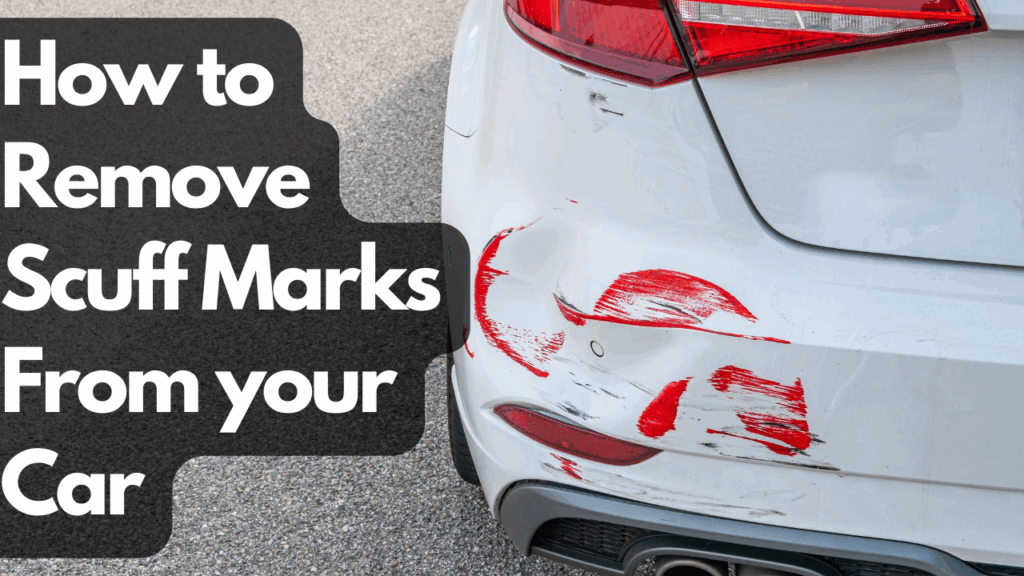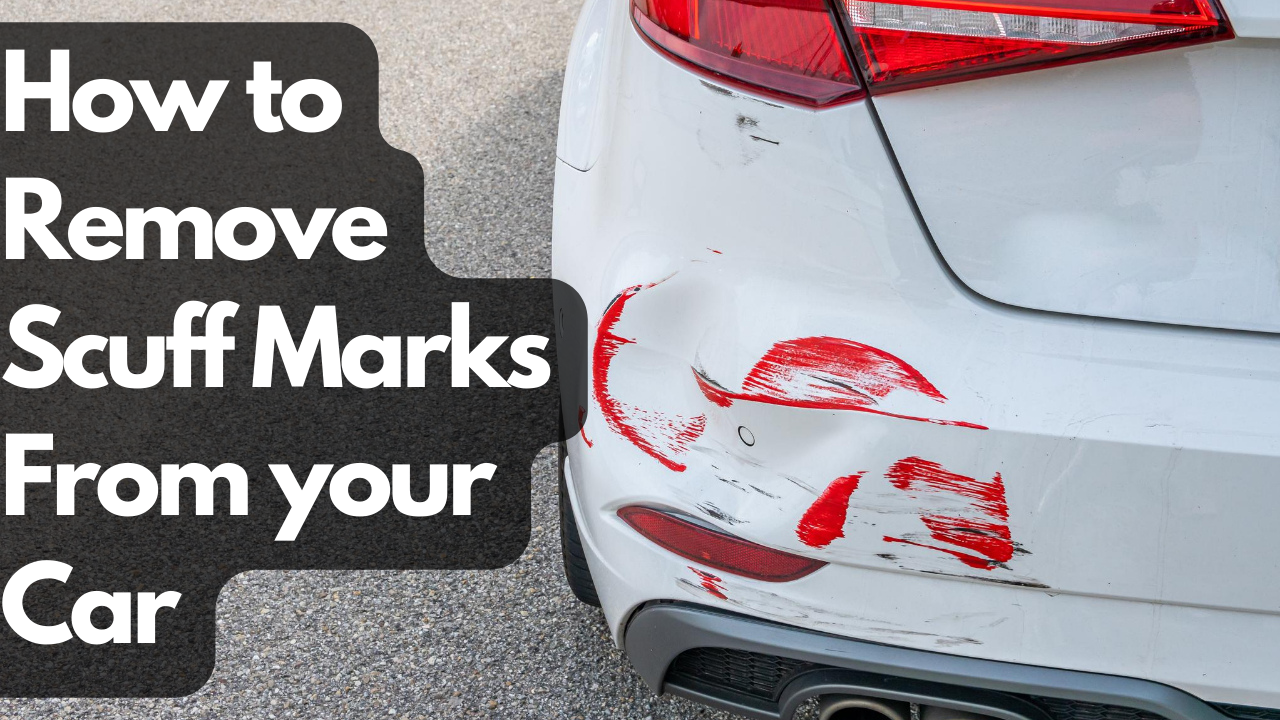
How to Remove Scuff Marks from Your Car Paint: A Comprehensive Guide
Scuff marks are the bane of any car owner’s existence. Those unsightly blemishes on your car’s otherwise pristine paint job can be incredibly frustrating. Whether it’s from a stray shopping cart, a careless driver, or even just brushing against a bush, knowing how to remove scuff car paint effectively can save you time, money, and a whole lot of stress. This comprehensive guide will walk you through the process, step-by-step, providing you with the knowledge and tools to restore your car’s paint to its former glory. We’ll cover everything from identifying the type of scuff to selecting the right products and techniques. So, let’s dive in and learn how to remove scuff car paint like a pro.
Understanding Scuff Marks
Before you start grabbing polishing compounds and cloths, it’s crucial to understand what a scuff mark actually is. A scuff mark is essentially a superficial scratch on the surface of your car’s paint. It typically only affects the clear coat layer, which is the protective layer on top of the color coat. This is good news because it means that in many cases, you can remove scuff car paint without needing professional help.
However, not all scratches are created equal. Deep scratches that penetrate the color coat or even the primer will require more extensive repairs, possibly involving repainting. Learning to differentiate between a light scuff and a deep scratch is the first step in determining the best course of action. For the purpose of this guide, we’ll focus on how to remove scuff car paint that is limited to the clear coat.
Identifying the Type of Scuff
There are several types of scuff marks you might encounter. Understanding the type of scuff will help you choose the most appropriate method to remove scuff car paint.
- Light Scuffs: These are usually caused by minor abrasions, like brushing against clothing or a soft object. They are typically superficial and easily removed.
- Moderate Scuffs: These are a bit deeper and might be caused by things like shopping carts or minor impacts. They might require more aggressive polishing.
- Severe Scuffs: These are the deepest scuffs that might even show the color of the object that caused the scuff. These may need professional attention.
A simple test to determine the severity is the fingernail test. Gently run your fingernail across the scuff. If your nail catches, the scratch is likely too deep to be easily buffed out and may require professional repair. If your nail doesn’t catch, you have a good chance of being able to remove scuff car paint yourself.
Essential Tools and Materials
Before you begin the process to remove scuff car paint, gather the necessary tools and materials. Having everything on hand will make the job much smoother and more efficient.
- Car Wash Soap: A good quality car wash soap is essential for cleaning the area before and after polishing.
- Microfiber Towels: These are soft and gentle on your car’s paint, minimizing the risk of further scratches.
- Clay Bar: A clay bar can remove embedded contaminants from the paint surface, providing a cleaner surface to work on.
- Detailing Spray: Used with the clay bar to lubricate the surface.
- Polishing Compound: Choose a polishing compound appropriate for the severity of the scuff. Start with a mild compound and move to a more aggressive one if needed.
- Buffing Pads: Use appropriate pads for applying the polishing compound. Foam pads are generally used for polishing.
- Dual-Action Polisher (Optional): A dual-action polisher can make the job easier and more effective, but it’s not strictly necessary. You can also polish by hand.
- Wax or Sealant: To protect the polished area after remove scuff car paint.
- Masking Tape: To protect surrounding areas of the car.
Step-by-Step Guide to Removing Scuff Marks
Now that you have your tools and materials, let’s get to the process of how to remove scuff car paint. Follow these steps carefully for the best results.
Step 1: Wash and Dry the Area
Start by thoroughly washing the area around the scuff mark with car wash soap and water. Rinse well and dry with a clean microfiber towel. This will remove any dirt and debris that could scratch the paint further during the polishing process.
Step 2: Clay Bar Treatment (Optional)
If the paint feels rough or contaminated, use a clay bar to remove any embedded particles. Spray the area with detailing spray and gently rub the clay bar back and forth until the surface feels smooth. Wipe away any residue with a clean microfiber towel. This step helps ensure a cleaner surface for polishing and makes it easier to remove scuff car paint.
Step 3: Apply Polishing Compound
Apply a small amount of polishing compound to a clean buffing pad. If you’re using a dual-action polisher, spread the compound evenly over the pad. If you’re polishing by hand, apply the compound directly to the scuffed area.
Step 4: Polish the Scuff Mark
If using a dual-action polisher, set it to a low speed and gently work the pad over the scuff mark in a circular motion. Apply light pressure and gradually increase the speed as needed. If polishing by hand, use firm, even pressure and rub the compound into the scuff mark in a circular motion. Continue polishing until the scuff mark begins to fade. The key is to be patient and avoid applying too much pressure, which could damage the paint.
Step 5: Wipe Away Residue
After polishing, wipe away any residue with a clean microfiber towel. Inspect the area to see if the scuff mark has been completely removed. If not, repeat steps 3 and 4, using a slightly more aggressive polishing compound if necessary. It’s always best to start with a mild compound and work your way up to avoid removing too much clear coat.
Step 6: Apply Wax or Sealant
Once the scuff mark is gone, apply a coat of wax or sealant to protect the polished area and restore its shine. Follow the manufacturer’s instructions for application. This will help prevent future scuff marks and keep your car’s paint looking its best. This final step is crucial after you remove scuff car paint to protect your work.
Tips for Preventing Future Scuff Marks
Prevention is always better than cure. Here are some tips to help prevent future scuff marks on your car:
- Park Carefully: Choose parking spots away from other cars and potential hazards like shopping carts.
- Use Car Covers: If you park your car outside, use a car cover to protect it from the elements and accidental scratches.
- Wash Your Car Regularly: Regular washing removes dirt and debris that can scratch the paint.
- Be Mindful of Your Surroundings: Be aware of your surroundings when walking around your car to avoid brushing against it with objects that could cause scuffs.
When to Seek Professional Help
While many scuff marks can be removed at home, some situations require professional help. If the scratch is deep, penetrates the color coat, or covers a large area, it’s best to take your car to a professional auto detailer or body shop. They have the tools and expertise to properly repair the damage and restore your car’s paint to its original condition. Attempting to fix a deep scratch yourself could potentially make the problem worse.
Common Mistakes to Avoid
When trying to remove scuff car paint, it’s easy to make mistakes that can damage your car’s finish. Here are some common pitfalls to avoid:
- Using Abrasive Cleaners: Avoid using harsh chemicals or abrasive cleaners, as they can scratch the paint.
- Applying Too Much Pressure: Applying too much pressure while polishing can remove too much clear coat and damage the paint.
- Using Dirty Towels: Always use clean microfiber towels to avoid scratching the paint with trapped dirt and debris.
- Ignoring Manufacturer’s Instructions: Always follow the manufacturer’s instructions for the polishing compound and wax or sealant.
The Satisfaction of a Scuff-Free Car
There’s nothing quite like the feeling of seeing your car gleaming with a flawless paint job. Knowing how to remove scuff car paint empowers you to maintain your vehicle’s appearance and protect its value. With the right tools, techniques, and a bit of patience, you can keep your car looking its best for years to come. So, the next time you spot a scuff mark, don’t panic. Just follow the steps outlined in this guide, and you’ll be well on your way to a scuff-free ride. Remember that the key to successfully remove scuff car paint is preparation, patience, and using the right products. [See also: Car Detailing Tips for Beginners]
In conclusion, learning how to remove scuff car paint is a valuable skill for any car owner. By understanding the different types of scuffs, gathering the necessary tools, and following a step-by-step process, you can effectively restore your car’s paint to its former glory. And with the tips provided, you can also prevent future scuff marks and keep your car looking its best. So, go ahead and give it a try. Your car will thank you for it! The ability to remove scuff car paint is a skill that will save you money and keep your car looking great.

